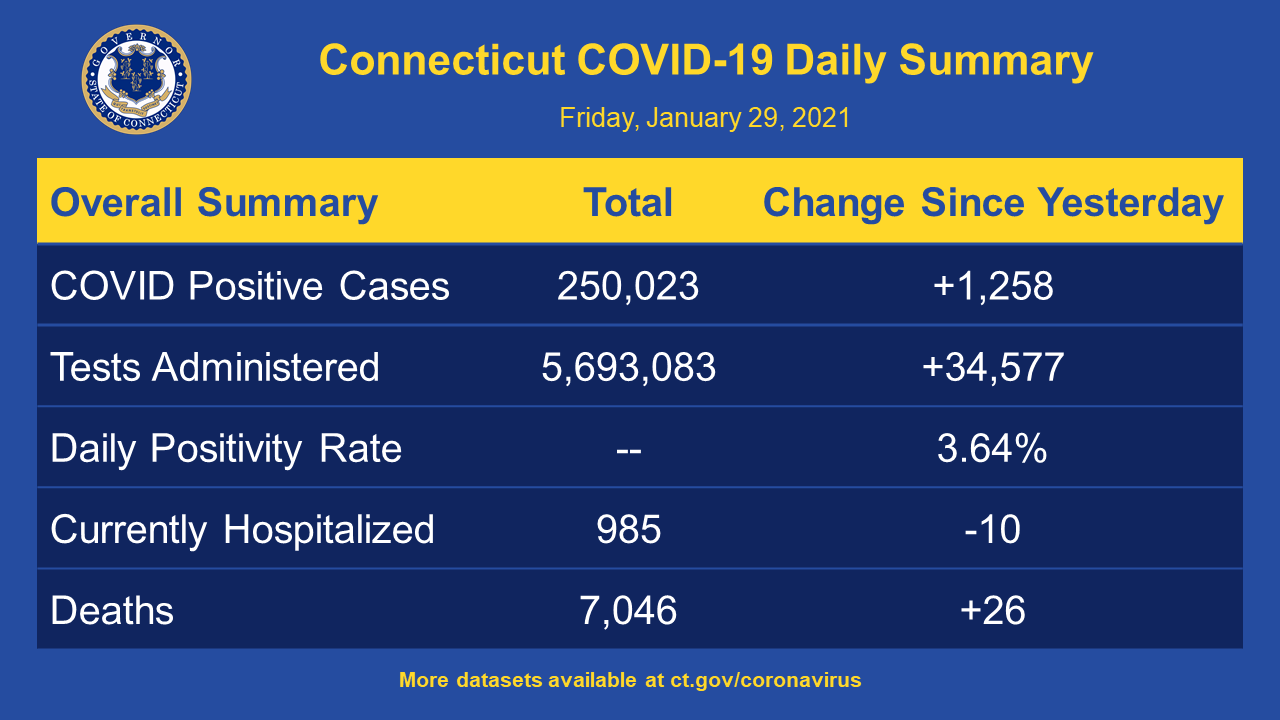|
Data updates on vaccine administration in Connecticut
The following data represents the total number of COVID-19 vaccinations administered in Connecticut, as reported to the state as of yesterday:
- First doses administered: 299,876
- Second doses administered: 64,379
- Total doses administered: 364,255
Connecticut ranks among the top three states in the nation for administering the vaccine to its residents. So far, 35 percent of the state’s population over the age of 75 has received the vaccine.
Connecticut is currently in phase 1b of its COVID-19 vaccination program. Right now under this phase, individuals over the age of 75 can receive the vaccine. Soon, the phase will expand to include individuals between the ages of 65 and 74, and individuals between the ages of 16 and 64 who have underlying health conditions. Residents and staff of congregate settings and frontline essential workers will soon also become eligible during this phase.
Information on Connecticut’s COVID-19 vaccination program is available here.
Vaccination Rollout
Currently, residents 75 and older can get the COVID-19 vaccine. Health officials expect to start scheduling appointments for people between the ages of 65 and 74 in early February. To monitor the rollout phase schedule and eligibility criteria, as well as to schedule an appointment, please click here.
|

